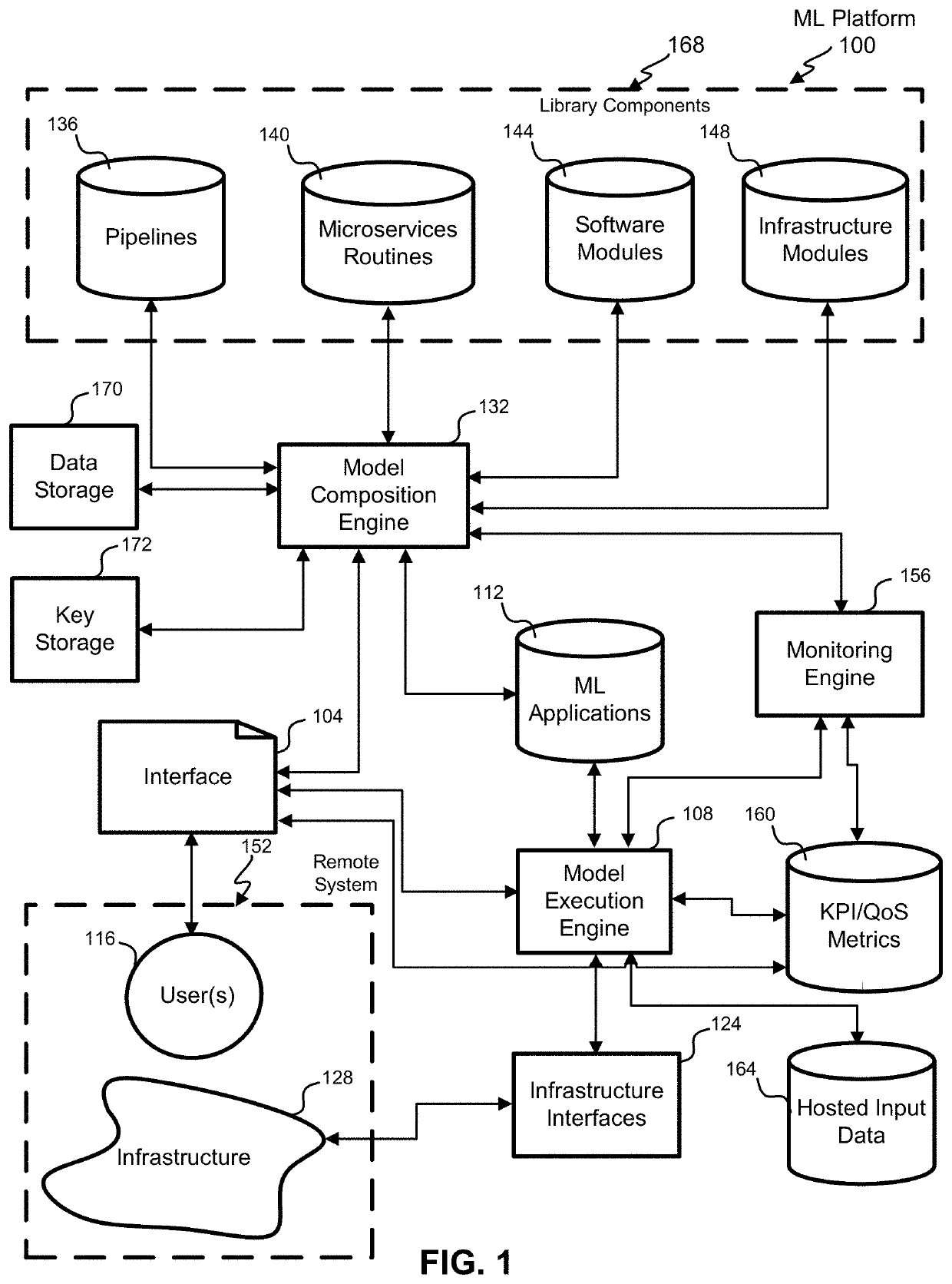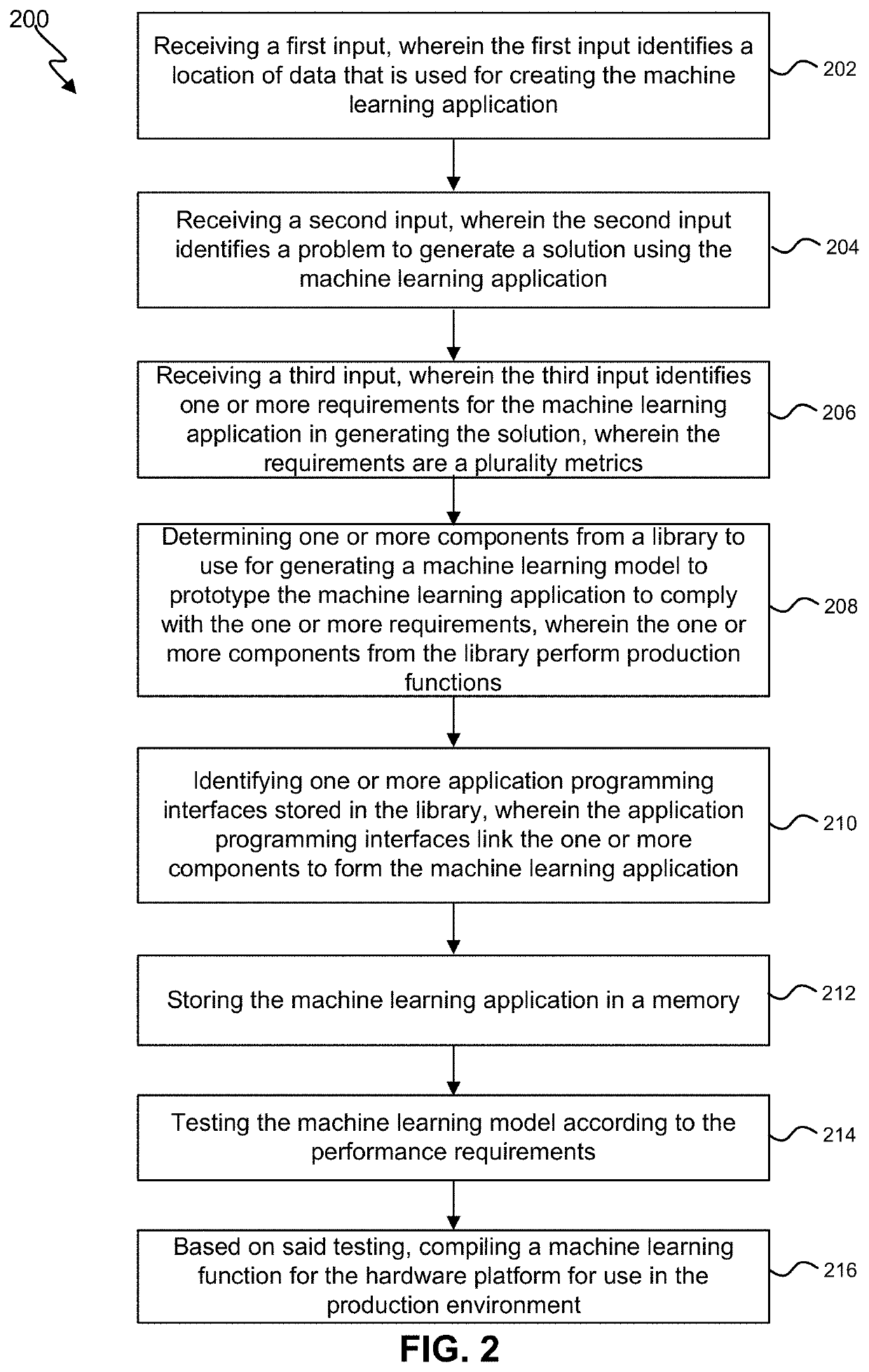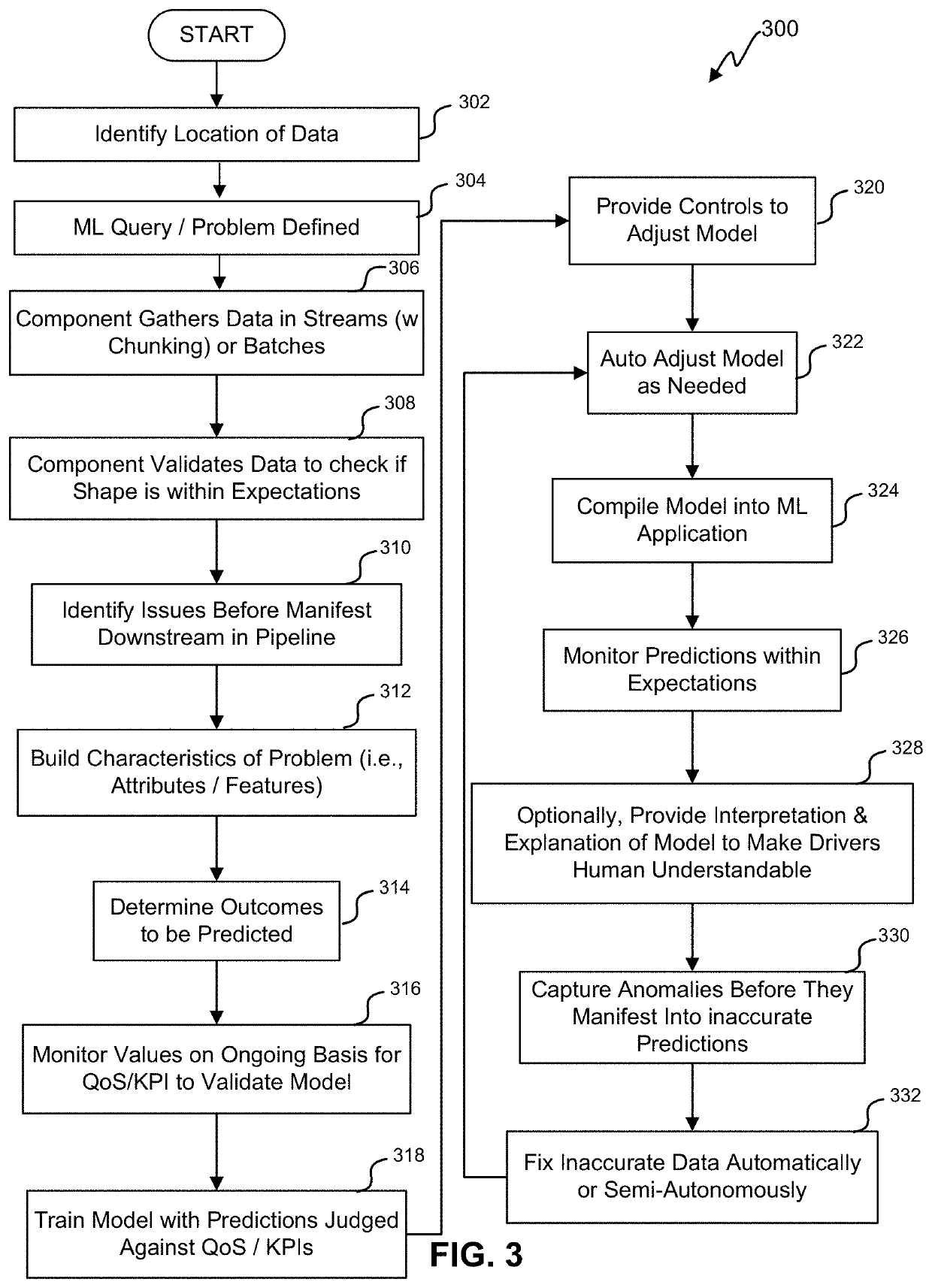However, building a
chatbot that can determine the end users' intents based upon user utterances, is a challenging task in part due to the subtleties and
ambiguity of natural languages and the dimension of the input space (e.g., possible user utterances) and the size of the output space (number of intents).
These default training models are typically inflexible in the training methodology employed.
Thus, it may be difficult to identify the root causes of lower than desired performance of the chatbot and determine how to improve the chatbot without a more flexible approach to training.
However, (i) these systems do not typically identify the
root cause of the lower than desired performance (instead they provide information such as bot A failed to identify a intent x amount of times over a period n), and it's up to the user to identify the
root cause of the problem from the information, and (ii) these types of analytic systems can become ineffective when hundreds or thousands of bots are being employed within a bot
system.
A conversation may take different paths based on the
end user input, which may
impact the decision the bot makes for the flow.
As described above, building the bot system, such as the
user intent classification engine that can determine the
end user's intents based upon
end user utterances, is a challenging task in part due to the subtleties and
ambiguity of natural languages and the dimension of the input space (e.g., possible end user utterances) and the size of the output space (number of intents).
In many cases, it may be difficult to more specifically identify the root causes of the lower than desired performance of the bot system and determine how to improve the bot system without using an analytics or optimization tools.
For example, particular sub-phrases, or words only appearing for a certain intent, may cause wrong assertions.
An error event may be generated when an error occurs.
A conversation may take different paths based on the
user input, which may
impact the decision the bot makes for the flow.
One problem can exist if the storage is compromised and bad agents can tamper the serialized machine
learning models through modification of various
library components 168.
Software licenses (e.g., Free and
Open Source Software (FOSS) licenses) associated certain libraries may be consistent and compatible, or inconsistent and / or incompatible with the corresponding licenses for other
software libraries.
Additionally, certain libraries and other external code bases may have known security vulnerabilities and / or cost considerations that may make those libraries more or less desirable to be integrated within a software project.
Furthermore,
open source libraries and other external code bases may themselves include dependencies to other libraries or code bases, which may have separate licenses, costs, security issues, and still other dependencies.
Many such
authorization systems many involve a substantial time
delay for
processing requests from clients developing software projects to integrate software libraries or external code, and such systems might not provide any explanation or suggestions of alternative software libraries.
Such reasons or causal factors may indicate that a code integration request was denied, for example, because of a security
vulnerability associated with the requested
open source library, or because the organization does not comply with the
license terms of the
open source library, or because the
license terms of the open source library are incompatible with the software project and / or other the terms of other licenses used by the open source library, etc.
As discussed above, the existence of other libraries / external code bases within the
current source code block may potentially cause security vulnerabilities (based on a single external library or combination of external libraries), or
license compatibility issues that may be relevant to whether or not a code integration request is approved.
For example, the model-based determinations to approve or deny a code integration request may be based on issues such as license compliance or compatibility, detected security vulnerabilities, software or computing infrastructure costs, additional
software dependencies, the recency and priority of the software project, the availability of security patches, the existence of
safer alternative libraries, etc.
These point predictions can carry uncertainty.
This uncertainty is normally not taken into account or properly calibrated before a machine learning model's point prediction is used by a
software system.
For example, the measure of confidence would be low for data that provides a poor fit for the point prediction.
However, latency of the process needs to be considered.
If the images take too long to process to be useful the machine learning process may not be effective.
If the leakage results in accumulation of fluid in the
retina, blurring of the vision can occur.
The search space for is typically very large and impractical to be explored exhaustively.
Existing machine learning systems do not incorporate features to continuously improve the model via a
background process.
However, model performance on its own does not cover the cases where the pipeline must be adapted at run-time given to some changes in online data
metrics or QoS compliance.
However, there is another kind of parameters that cannot be directly learned from the regular training process.
The data scientist may not know the best value for a model
hyperparameter on a given problem.
During the execution of a machine learning service or pipeline, the environment is in constant change and can therefore invalidate the desired state defined by the user.
The invalid state could include changes in the environment,
data corruption, model performance degradation, and / or the availability of new features.
 Login to View More
Login to View More  Login to View More
Login to View More 


